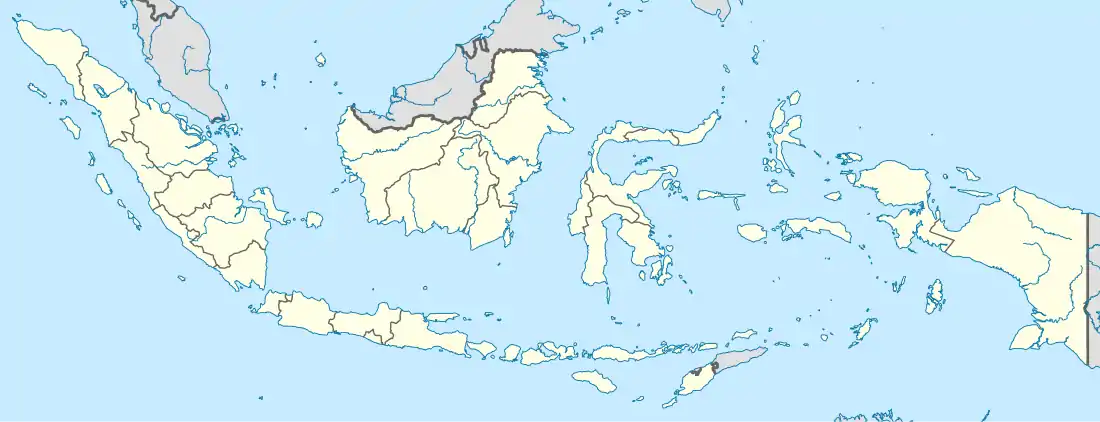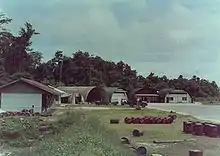Kaimana Regency
Kaimana Regency is a regency in the south of West Papua province of Indonesia. It covers an area of 18,500 sq. km, and had a population of 46,249 at the 2010 Census;[2] the latest official estimate (as at mid 2019) is 60,216.[3] The administrative centre is the town of Kaimana. The Mairasi languages are spoken in the regency.
Kaimana Regency
Kabupaten Kaimana | |
|---|---|
 Coat of arms | |
 Location in Indonesian Papua | |
 Kaimana Regency Location in Indonesia | |
| Coordinates: 3.6609°S 133.7745°E | |
| Country | Indonesia |
| Province | West Papua |
| Capital | Kaimana |
| Government | |
| • Regent | Matias Mairuma |
| • Vice Regent | Ismail Sirfefa |
| Area | |
| • Total | 18,500 km2 (7,100 sq mi) |
| Population (2019)[1] | |
| • Total | 60,216 |
| • Density | 3.3/km2 (8.4/sq mi) |
| Time zone | UTC+9 (IEST) |
| Area code | (+62) 957 |
| Website | kaimanakab |
Administrative Districts
The regency comprises seven districts (kecamatan), tabulated below with their populations at the 2010 Census[4] and the latest (mid 2019) official estimates of population.[5] The table also includes the number of administrative villages (desa and kelurahan, 86 in total) in each district and its post code.
| District | Area in km2 | Population 2010 Census | Population 2019 Estimate | Number of villages | Post code |
|---|---|---|---|---|---|
| Buruway | 2,650 | 3,500 | 4,352 | 10 | 98123 |
| Teluk Arguni Atas (Upper Arguni Bay) | 3,010 | 3,530 | 4,390 | 24 | 98111 |
| Teluk Arguni Bawah (Lower Arguni Bay) | 1,990 | 2,384 | 2,966 | 15 | 98112 |
| Kaimana | 2,095 | 29,593 | 40,112 | 19 | 98113 |
| Kambrau | 755 | 2,216 | 2,477 | 7 | 98114 |
| Teluk Etna (Etna Bay) | 4,195 | 3,107 | 3,658 | 5 | 98121 |
| Yamor | 3,805 | 1,919 | 2,261 | 6 | 98122 |

Lengguru area
Lengguru is well-preserved without land opened for plantation, logging or mining. This is in stark contrast to the other parts of Indonesia (especially the Indonesian Papua area which is not 100 percent preserved).
In 2014 researchers revealed the level of biodiversity in the Lengguru area covering its coastal region and karsts. The expedition covered a range from 100 meters below sea level underwater up to 1,000 meters above sea level. Many species of flora and fauna were discovered, of which some are new species.
References
- Badan Pusat Statistik, Jakarta, 2020.
- Biro Pusat Statistik, Jakarta, 2011.
- Badan Pusat Statistik, Jakarta, 2020.
- Biro Pusat Statistik, Jakarta, 2011.
- Badan Pusat Statistik, Jakarta, 2020.
| Wikimedia Commons has media related to Kaimana Regency. |